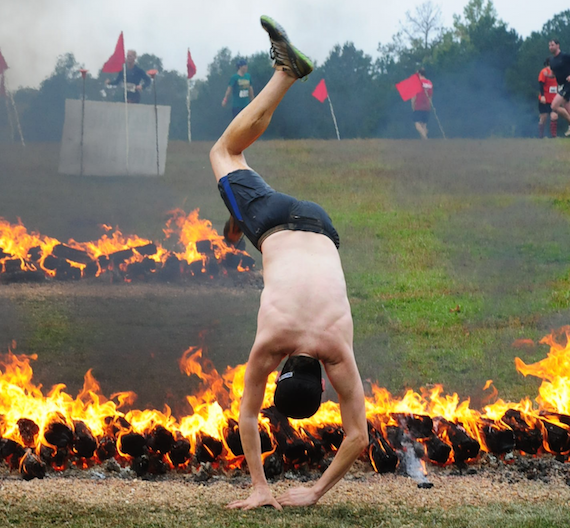A few years ago I spoke at a CLE event for OutkickCLE. I had gone over the night before and stayed with my brother-in-law & his wife so I wouldn’t have to drive over in the morning.
But the CLE wasn’t until the afternoon, and I knew I would have a a few hours to kill in the morning. So I brought my gym gear and went to a gym. It’s always interesting to be in a different city and go to a new gym. There is a touch of anxiety involved. How will it be laid out? What type of equipment will they have? What will the people/culture be like?
When you’re a different face in a gym, regulars check you out. You’re a new face in the crowd. You don’t belong there. Do you know what you’re doing? Are you passing through or a new permanent addition? It can be slightly uncomfortable.
But that’s why it’s valuable and why you should do it.
Visualizing Success…And Failure
Earlier in the week I had been speaking with a very successful litigator and the topic of visualization came up. Imagining scenarios that you might find yourself in and developing ideal outcomes in your mind’s eye. It’s a common activity for pro athletes. They visualize how they want to perform while they are in the game.
The attorney I spoke with described how she used visualization in her practice. Successful performance in the courtroom or at a deposition. Another lawyer asked if she had ever taken the time to visualize bad scenarios. She hadn’t but thought it would be valuable – and I chimed in that it is.
I brought up training in Brazilian Jiu-Jitsu (BJJ) as being almost exclusively a physical manifestation of “bad scenarios” for a long time when you begin practice. BJJ was founded upon the notion that most fights end up on the ground. If two people start a fight and neither of them has any combat training, 90% of the time there are a few wild swings, they clinch together and go to wrestling on the ground. Furthermore, it was presumed that the larger/stronger person will end up on top. As such, BJJ training for beginners starts with the Guard.
On the bottom, with someone on top of you. The hypothetical worst scenario that you find yourself in in a fight. That’s where you start from in BJJ.
Or you train from being on the bottom in side control, or someone having your back. You constantly put yourself in disadvantaged positions. Because only when you’ve been there again and again, can you start to overcome it. Being on bottom stops being awkward and begins to feel comfortable. You recognize options and movements that you can use to attack or reverse the position.
The more time you spend in these “bad” scenarios, the less uncomfortable they become. In fact, they start to become “home.” A safe place to be. Guard no longer a negative position, but more a neutral position from which you know the pathways to improvement. It’s still not ideal to be on the bottom, but it no longer causes you anxiety or fear. You learn that you can be dangerous even though you are in a “bad scenario” – you learn you can attack.
The more often you place yourself in uncomfortable situations and bad scenarios, the better equipped you’ll be to deal with them. Even if it’s a new uncomfortable situation or bad scenario, by deliberately placing yourself in bad situations you develop the experience and resources necessary to handle any bad situation – not just ones you have practiced for.
Another fighting example from a few years ago. In the below GIF, you’ll see former UFC Women’s Bantamweight Champion Ronda Rousey be almost taken down by challenger Cat Zigano. Then in a flurry of movement: Rousey reverses the takedown, takes Zigano’s back, then transitions into a wrap-around armbar from the back.

Afterwards, Rousey stated she had never practiced the reversal or style of armbar that she used on Zigano. They just came to her on the fly. Through years of training and facing adversity, Rousey had the tools and resources available to her to invent solutions to new difficult situations.
Deliberate practice of putting yourself in bad situations you can change change your response to anxiety and the unknown.
You can learn to use Anxiety to enhance your performance, not hinder it. So seek out uncomfortable situations and unfamiliar places.
Embrace challenges and obstacles so you can be ready for what comes next.















